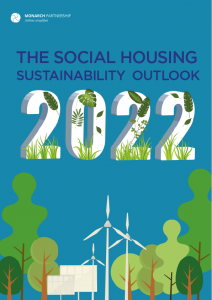We look back on the history of Earth Day, how and why it was established, this year’s theme of Climate Action, and how Building Management Systems can contribute to achieving UK climate goals.

A hallowed history
The likely progenitor to the modern environmental movement, Earth Day began on April 22, 1970 when 20 million Americans, 1 in 10 at the time, united to protest environmental ignorance.
The response to this massive display of unity and concern was the founding of the Environmental Protection Agency (EPA), the establishment of the Clean Air, Clean Water and Endangered Species Act and the standardisation of such legislation and governmental bodies across the world.
Earth Day is now considered the world’s largest civic event and holds such cultural resonance that it was on this day four years ago that the Paris Climate Agreement was brought into force.
Current affairs
Climate Action is this year’s Earth Day theme and, in answer to the COVID-19 lockdown, it’s organisers have adopted a digital format with speakers ranging from his holiness Pope Francis to musician Ziggy Marley.
UK climate targets, as stated back in 2016, including an ambitious reduction of 57% in greenhouse gas emissions by 2030 however this does not imply that we should stop boiling our kettles or watching our favourite Netflix shows.
The two key areas for improvement, that the Committee on Climate Change (CCC) have identified, surround transitioning to low-carbon or zero-carbon fuels and improved efficiency with regards to energy usage.
UK energy suppliers have already made unprecedented progress in moving to greener energy sources, with renewables filling over 20% of UK demand in 2019, however as consumers we may only be able to influence these changes with our spending habits.
Luckily, using energy efficiently is something that we can each take responsibility for, both at the individual and organisational levels. While we might domestically adopt best practices like switching off lights before leaving a room, for enterprises of scale direct action may not be the most effective.
And with the introduction of SECR, and other legislation designed to promote UK climate goals, it is inclement upon management professionals to find the solutions which are effective.
Systems of change
The integration of the management of utilities on commercial sites comprehensively improves energy efficiency, it not only affords facility managers unparalleled control over individual utilities but it also provides the usage data that will frame subsequent decision making.
As such, Building Management Systems (BMS) and their installation are poised to become a standard among real estate developers and a sought-after product in existing commercial and residential structures.
Housing associations and social landlords will have added impetus to invest in BMS technology in the wake of COVID-19 since the remote access it offers will offer a solution to many problems that those structure without it now face.
The value of being able to track utility performance and usage remotely, in terms of the protection it can afford both staff and residents, cannot be overstated at this time.
Monarch has now completed its latest product offering along these lines, Swift Smart Solutions, a Micro BMS system designed specifically for the needs of housing associations, social landlords and their tenants.
Find out more about this product and our other services.
















